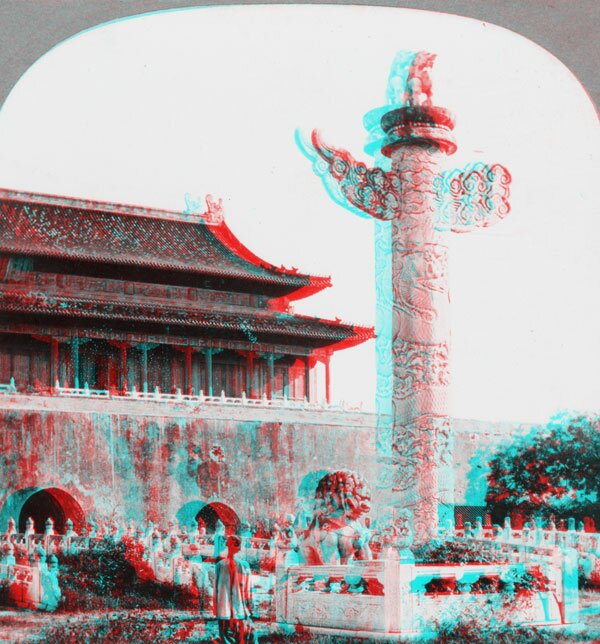
1919 stereograph by Keystone View Company: "Palace Gate, Imperial City, Peking, China"
The 2008 Olympics begin tomorrow in Beijing. I shall leave it to others to ponder the wisdom of allowing the brutal tyrants of China to host the Olympic games, or whether to boycott the games in protest. I don't have any Olympic sports coverage here on Swell 3D. Instead, I have these nine 3D photos of old Peking (as Beijing was then called), which I converted to anaglyph for 3-D glasses from historic stereographs. This is the Beijing of a century ago, brought to you through the magic of stereo photography.
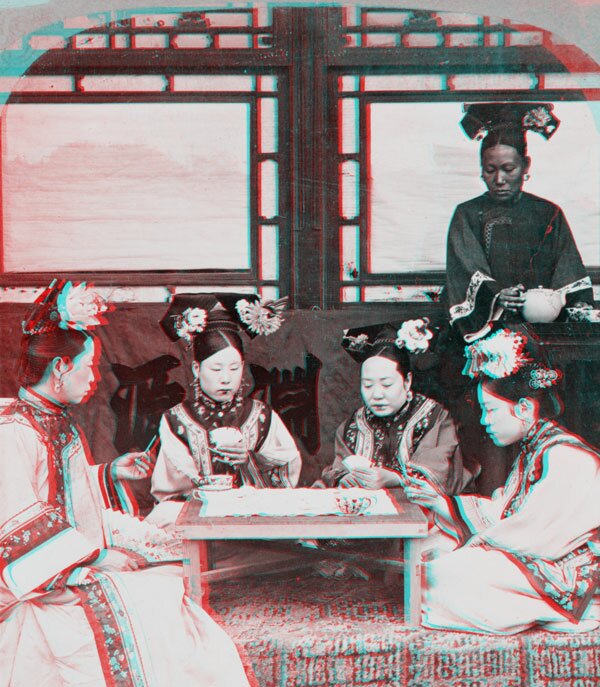
1902 stereograph by C.H. Graves: "Manchurian ladies at tea and cards, Peking, China"
1901 stereograph by Underwood & Underwood: "Typical springless, seatless Chinese coach, looking toward Coal Mountain and Imperial City, Peking, China"
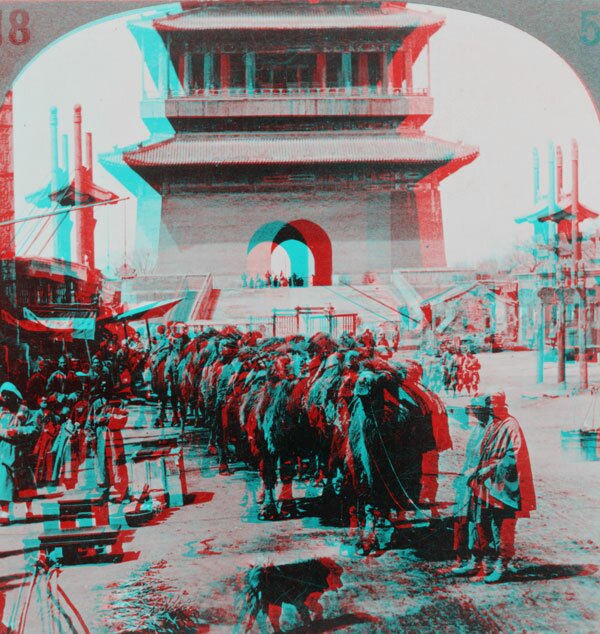
1919 stereograph by Keystone View Co.: "Train of Bactrain camels, Peking, China"
I have retained the original captions of the photos, including the old spellings. 'Peking' is modern Beijing. 'Ta-ching-men' is Tiananmen, and 'Chien-men' is Qianmen.
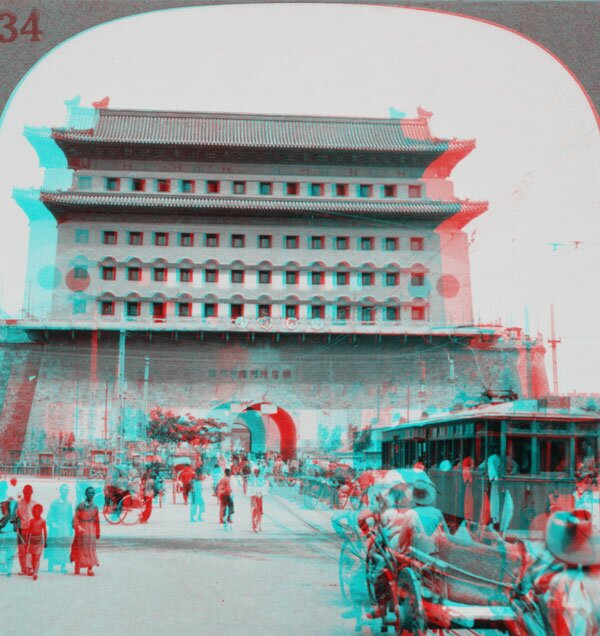
1931 stereograph by Keystone View Co.: "Outside the Chien Men Gate, Peking, China"
The remaining four photographs date from the Boxer Rebellion period, during which an alliance of eight nations invaded China to defeat the murderous terrorists of the Society of Right and Harmonious Fists, called the Boxers. The Qianmen Gate, pictured above and below, was heavily damaged. First it was burned down by the Boxers, then it was shelled by the Alliance. (It was rebuilt after the war, and still stands today in Tiananmen Square.)
1902 stereograph by H.C. White Co.: "The Great Southern Gate, where the Allied Forces entered Peking, China"
The Boxers, aided covertly by the imperial government, set out to kill all foreigners in China, as well as all Chinese Christians. Slaughtering by the thousands, they did not spare the innocent, neither women nor children nor clergy. (Today, the People's Republic praises the Boxers for their "patriotism.")
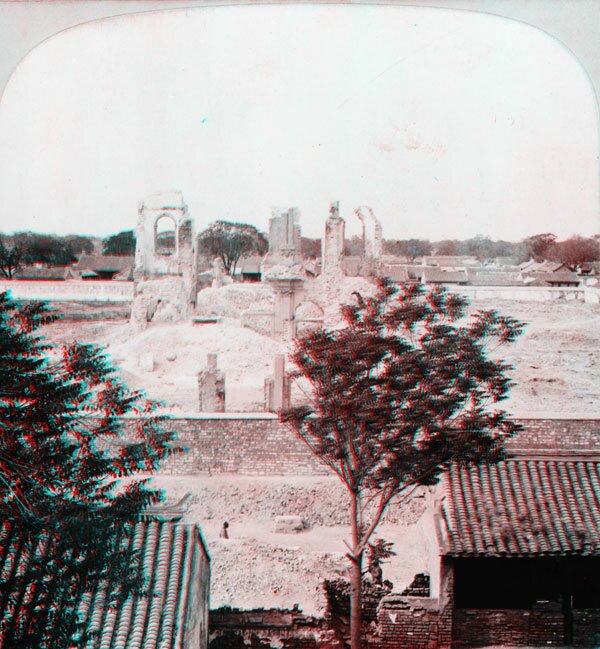
1902 stereograph by H.C. White Co.: "Catholic Cathedral in ruins -- scene of a terrible massacre, Peking, China"
Shocked by the atrocities in China, the Alliance acted quickly, invading to relieve their citizens and diplomats besieged in Peking, and to destroy the Boxers. The eight nations of the Alliance were Austria-Hungary, France, Germany, Italy, Japan, Russia, the United Kingdom, and the United States. Each nation sent whatever soldiers it could on such short notice. Japan and Russia, being closest, sent the most: 21,000 and 13,000 men respectively. The U.S. sent 3,000 soldiers, who had been stationed in the Philippines.
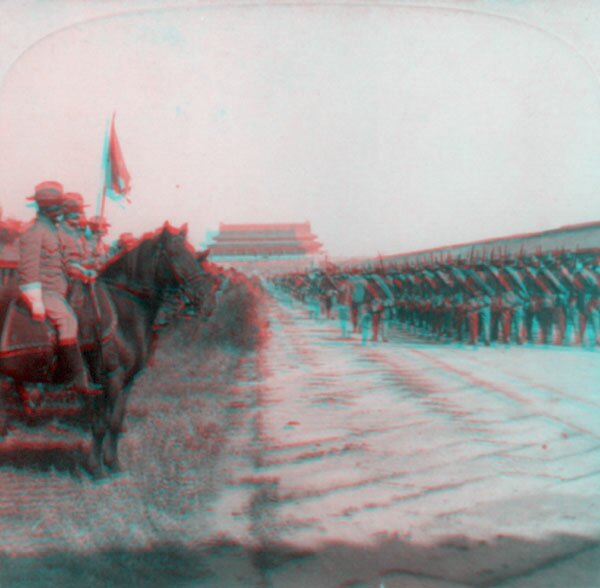
1901 stereograph by Underwood & Underwood: "6th U.S. Cavalry honoring Count Waldersee on his arrival -- between Chien-men and Ta-ching-men Gates -- Peking, China"
The Alliance won a decisive victory, occupying the capital and saving thousands of their citizens from slaughter. Many Boxers were hunted down and captured throughout the country, both by Allied forces and by the Chinese who opposed the terrorists. The leaders of the uprising were executed, and the Chinese government agreed to pay reparations for its part in abetting their crimes.
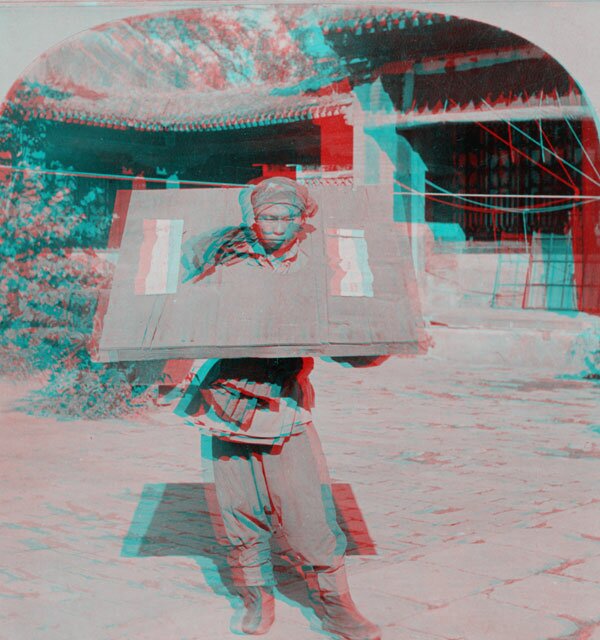
1900 stereograph by Keystone View Co.: "One of the modes of punishment in China - a Boxer prisoner, Peking, China"











Leave a comment